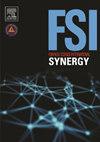政策批评:把摇晃婴儿综合症和虐待性头部创伤混为一谈——这一措施有几个负面影响
Q1 Social Sciences
引用次数: 0
摘要
合并摇晃婴儿综合征(SBS)与更广泛和异质虐待性头部创伤(AHT)的诊断是有问题的。我们认为,美国儿科学会(AAP)在2009年采取这一步骤的原因是对2001年及以后提出和讨论的另一种理论的回应。这一理论产生了完全不同的法律后果,因为它表明SBS诊断所依据的医学结果,即“三位一体”(硬膜下出血/SDH、视网膜出血/RH和脑病)是非创伤性的。如果这种解释被接受,这不仅表明过去发生过严重的法律虐待,儿科医生应该对此负责,而且今后在诊断不明确的情况下,通过声称受到虐待来保护儿童将更加困难。我们还介绍了其他儿科组织采取的其他步骤,对当前的SBS争议产生了类似的影响。我们认为,这些基于价值的考虑是SBS被纳入AHT概念的潜在原因,也是为什么相互竞争的理论和基于证据的批评被忽视的原因,从而总是将三联症的发现解释为虐待的结果。如果对美国儿科学会来说,保护儿童的伦理原则比发展循证诊断程序的科学抱负更重要,我们鼓励美国儿科学会诚实地承认这一优先次序。或者至少承认,在这种道德困境中,AAP发现最不坏的选择是首先,保护孩子!尽管这样做的代价是,许多婴儿及其兄弟姐妹可能会因错误的理由与家人分离,看护人可能会被错误地指控并被判虐待儿童罪。本文章由计算机程序翻译,如有差异,请以英文原文为准。
Policy critique: The conflation of shaken baby syndrome and abusive head trauma – a measure with several negative effects
The amalgamizing of shaken baby syndrome (SBS) with the much broader and heterogeneous abusive head trauma (AHT) diagnosis is problematized. We suggest that the reason why American Academy of Pediatrics (AAP) took this step in 2009 was a response to another theory being presented and discussed from 2001 and onwards. This theory had completely different legal consequences as it suggested that the medical findings on which the SBS diagnosis were based, i.e. “the triad” (subdural hemorrhages/SDH, retinal hemorrhages/RH, and encephalopathy) were non-traumatic. If such an explanation was accepted, this would reveal not only that serious legal abuses had occurred in the past and that the pediatricians should be held responsible for this, but also that it would in the future be more difficult to protect the child by claiming abuse in cases of unclear diagnosis. We present also other steps, taken by other pediatric organizations, having similar effects upon the current SBS controversy.
We suggest that these value-based considerations were the underlying reasons why SBS was integrated in the AHT concept, and why competing theories and evidence-based criticism is ignored, allowing to always interpret triad findings as the result of abuse. If the ethical principle to protect the child is more important to AAP than the scientific ambition to develop evidence-based diagnostic procedures, we encourage AAP to be honest and admit this prioritization. Or at least to admit that in this ethical dilemma, AAP finds that the least bad choice is First of all, protect the child! despite the price is that many infants and its siblings may be separated on wrong grounds from their family, and that caregivers might be falsely accused and convicted of child abuse.
求助全文
通过发布文献求助,成功后即可免费获取论文全文。
去求助
来源期刊

Forensic Science International: Synergy
Social Sciences-Law
CiteScore
4.90
自引率
0.00%
发文量
75
审稿时长
90 days
 求助内容:
求助内容: 应助结果提醒方式:
应助结果提醒方式:


